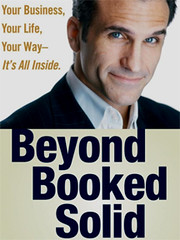Social media can be a mean sport in some arenas. It can be so mean that sometimes the media overreacts, like Popular Science. The publication will abandon comments, claiming that a politically motivated war on expertise has eroded the popular consensus on "scientifically validated topics."
They don't want to be part of that, even if they still will be (whether they have comments or not). They might even have it wrong. The whole of science is not to continually reinforce "scientifically validated topics" but to investigate the known and unknown. After all, more than one scientifically validated topic has been turned on its head. There are things we don't know. But that's a topic for another time.
Do comment sections really make a difference?
My interest in this topic was inspired in part by Mitch Joel, who suggested websites could turn comments off, at least until someone develops better technology to keep them free and clean. His point was that online conversations have evolved. Comments are anywhere and everywhere nowadays.
Specifically, people are more likely to share a link and/or add their thoughts elsewhere — Facebook, Twitter, Linkedin, Medium, or some other platform — than they ever will be to leave a comment at the source. Let's face it. Websites and blogs haven't been the center of the social universe for some time.
Today, social media requires significantly more elasticity and adaptability and the conversations that revolve around content are much more hyper-extended. They are smaller, shorter, less formal and more fragmented discussions about articles and posts. It's as if all of social traded sharing for substance.
This is vastly different from the days when bloggers used to covet comments as a measurement (despite never being able to explain why Seth Godin could succeed without them). Years ago, there were primarily three ways to respond to an article or post — you left a comment, wrote a rebuttal (on your own blog), or shared it as a thread in a niche forum. It made things orderly but also exclusionary.
That is not the case anymore. Now, some articles can sport a dozen mini-conversations within the same platform, initiated by people who might have little or no connection to each other. It's fascinating and fragmented stuff, which is why some pros like Danny Brown look to close the loop on fragmentation.
Livefyre sounds like a decent solution, but not everyone cares for it despite going a bit beyond what Disqus "reactions" used to offer before they discontinued them. Other emergent comment solutions worth exploring include Google+ comments or Facebook comments. They draw mixed reactions too.
For me, I think the issue is something else beyond nuts and bolts. Errant comments, like those that Popular Science complained about, are manageable. Moderating comments by setting permissions isn't as hard as some people make it sound. And if fragmentation is a concern, Livefyre might mitigate it.
All that sounds fine, but it never gets to the root issue. You see, there is only one fundamental difference between comments at the source and comments away from the source.
Do you want comments to be part of the article or about the article?
Comments made at the source become part of the article. Comments made away from the source, even if they are ported in by a program, might relate to but are largely independent of the article. The difference is that simple, and this simplicity is deceiving.
 It's deceiving because when someone comments, where someone comments and to whom they comment to all have a bearing on the content, context, and character of that comment. It's deceiving because people tend to write to the author at the source (or other commenters) while they tend to write about the author or source material (sometimes slanting the intent to serve their purpose) away from the source. And it's deceiving because comments away from the source will never have the same kind of physical attachment or quasi permanence that those comments closer to source seem to achieve.
It's deceiving because when someone comments, where someone comments and to whom they comment to all have a bearing on the content, context, and character of that comment. It's deceiving because people tend to write to the author at the source (or other commenters) while they tend to write about the author or source material (sometimes slanting the intent to serve their purpose) away from the source. And it's deceiving because comments away from the source will never have the same kind of physical attachment or quasi permanence that those comments closer to source seem to achieve.
Right. Most people do not search for reactions when an article is older than a week. Few have the appetite to scroll long lists of link shares that aren't really comments, whether they are ported in or not. And, unless there is historical or outlandish content, even fewer read comments bumped to page 2.
So when Popular Science made the decision to abandon comments, they didn't just make a decision to suspend spammers and people they fundamentally disagree with on topics like climate change and evolution. They made a decision to disallow different viewpoints from becoming part of an article. And they more or less told told readers to write about the content but not to the authors of that content.
In a few weeks' time, their decision will likely be sized up for its pros and cons. But make no mistake, it was still the wrong decision. Silence is no friend of science.
You see, neither science nor faith need to shirk at a politically motivated war on their mutual expertise. The truth is that they are not nearly as polarizing as some would have you believe. Science and faith are like brothers in attempting to understand the unknown, often inspiring the other to stop and think.
What Popular Science could have done instead was create a white list of commenters better suited to scientific discussion, perhaps with differing but conscientious viewpoints. Such an approach might have moved their content forward, leading to breakthroughs or a better understanding of science.
But what do I know? I've adopted a different outlook altogether. Comments, I think, work best when they are treated like someone who calls into a radio talk show. If you could talk about anything you want, what do you want to talk about today? The comments are yours or we can chat in person at the University of Nevada, Las Vegas on October 19 during a 3-hour social media session.
They don't want to be part of that, even if they still will be (whether they have comments or not). They might even have it wrong. The whole of science is not to continually reinforce "scientifically validated topics" but to investigate the known and unknown. After all, more than one scientifically validated topic has been turned on its head. There are things we don't know. But that's a topic for another time.
Do comment sections really make a difference?
My interest in this topic was inspired in part by Mitch Joel, who suggested websites could turn comments off, at least until someone develops better technology to keep them free and clean. His point was that online conversations have evolved. Comments are anywhere and everywhere nowadays.
Specifically, people are more likely to share a link and/or add their thoughts elsewhere — Facebook, Twitter, Linkedin, Medium, or some other platform — than they ever will be to leave a comment at the source. Let's face it. Websites and blogs haven't been the center of the social universe for some time.
Today, social media requires significantly more elasticity and adaptability and the conversations that revolve around content are much more hyper-extended. They are smaller, shorter, less formal and more fragmented discussions about articles and posts. It's as if all of social traded sharing for substance.
This is vastly different from the days when bloggers used to covet comments as a measurement (despite never being able to explain why Seth Godin could succeed without them). Years ago, there were primarily three ways to respond to an article or post — you left a comment, wrote a rebuttal (on your own blog), or shared it as a thread in a niche forum. It made things orderly but also exclusionary.
That is not the case anymore. Now, some articles can sport a dozen mini-conversations within the same platform, initiated by people who might have little or no connection to each other. It's fascinating and fragmented stuff, which is why some pros like Danny Brown look to close the loop on fragmentation.
Livefyre sounds like a decent solution, but not everyone cares for it despite going a bit beyond what Disqus "reactions" used to offer before they discontinued them. Other emergent comment solutions worth exploring include Google+ comments or Facebook comments. They draw mixed reactions too.
For me, I think the issue is something else beyond nuts and bolts. Errant comments, like those that Popular Science complained about, are manageable. Moderating comments by setting permissions isn't as hard as some people make it sound. And if fragmentation is a concern, Livefyre might mitigate it.
All that sounds fine, but it never gets to the root issue. You see, there is only one fundamental difference between comments at the source and comments away from the source.
Do you want comments to be part of the article or about the article?
Comments made at the source become part of the article. Comments made away from the source, even if they are ported in by a program, might relate to but are largely independent of the article. The difference is that simple, and this simplicity is deceiving.
 It's deceiving because when someone comments, where someone comments and to whom they comment to all have a bearing on the content, context, and character of that comment. It's deceiving because people tend to write to the author at the source (or other commenters) while they tend to write about the author or source material (sometimes slanting the intent to serve their purpose) away from the source. And it's deceiving because comments away from the source will never have the same kind of physical attachment or quasi permanence that those comments closer to source seem to achieve.
It's deceiving because when someone comments, where someone comments and to whom they comment to all have a bearing on the content, context, and character of that comment. It's deceiving because people tend to write to the author at the source (or other commenters) while they tend to write about the author or source material (sometimes slanting the intent to serve their purpose) away from the source. And it's deceiving because comments away from the source will never have the same kind of physical attachment or quasi permanence that those comments closer to source seem to achieve.Right. Most people do not search for reactions when an article is older than a week. Few have the appetite to scroll long lists of link shares that aren't really comments, whether they are ported in or not. And, unless there is historical or outlandish content, even fewer read comments bumped to page 2.
So when Popular Science made the decision to abandon comments, they didn't just make a decision to suspend spammers and people they fundamentally disagree with on topics like climate change and evolution. They made a decision to disallow different viewpoints from becoming part of an article. And they more or less told told readers to write about the content but not to the authors of that content.
In a few weeks' time, their decision will likely be sized up for its pros and cons. But make no mistake, it was still the wrong decision. Silence is no friend of science.
You see, neither science nor faith need to shirk at a politically motivated war on their mutual expertise. The truth is that they are not nearly as polarizing as some would have you believe. Science and faith are like brothers in attempting to understand the unknown, often inspiring the other to stop and think.
What Popular Science could have done instead was create a white list of commenters better suited to scientific discussion, perhaps with differing but conscientious viewpoints. Such an approach might have moved their content forward, leading to breakthroughs or a better understanding of science.
But what do I know? I've adopted a different outlook altogether. Comments, I think, work best when they are treated like someone who calls into a radio talk show. If you could talk about anything you want, what do you want to talk about today? The comments are yours or we can chat in person at the University of Nevada, Las Vegas on October 19 during a 3-hour social media session.




































